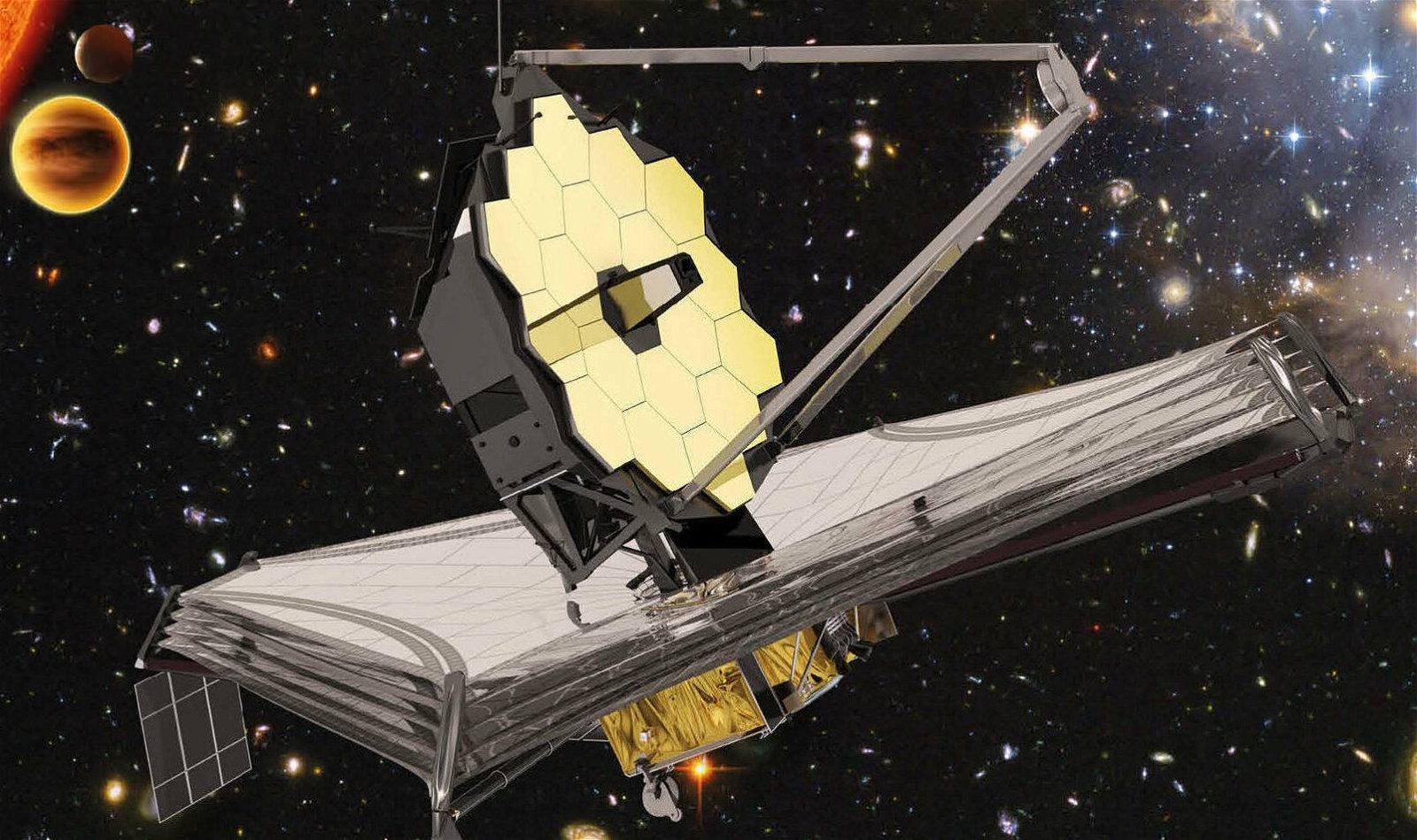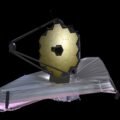

Welcome to this week’s edition of The Intelligence Brief… with Christmas behind us and the New Year steadily approaching, this week we’ll be taking a look at the incredible Christmas present NASA delivered on December 25 with the successful launch of the James Webb Telescope. Items we’ll be discussing include 1) Saturday’s historic launch of the most complex space science observatory ever built, 2) why Webb will likely last longer than expected, 3) what makes the next few months so critical for the future of Webb’s operations, and 4) how the telescope will very likely make unexpected discoveries in the years ahead.
Before we get into all of that, a few stories making headlines at The Debrief in recent days include how studies have shown that if the U.S. military was its own country, it would be the top global emitter of greenhouse gasses, how virtual reality is even changing the way people practice their religious beliefs, and the ongoing debate over whether life could exist on Venus.
And with that out of the way, we now turn our attention to the historic events of recent days, as the James Webb Telescope makes its way to its orbital location nearly a million miles away from Earth.
NASA Makes an Epic Christmas Delivery
NASA delivered a Christmas present of the historic kind this year, as the James Webb Space Telescope made liftoff at 7:20 a.m. on December 25 from its launch site in French Guiana, South America. The telescope, launched on board an Ariane 5 rocket, represents a joint operation between NASA and its partners with the European Space Agency and the Canadian Space Agency.
Following its successful launch, over the next six months Webb will undergo a commissioning period before it can dispatch its first images back to Earth. Unlike the Hubble Space Telescope, Webb differs from its predecessor mostly in that it views light in the infrared spectrum, which will allow it to detect illumination from distant objects in space with a greater degree of detail and clarity.


Fitted with an array of state-of-the-art instruments, Webb will carry out NASA’s flagship mission as it scours space for new planets—perhaps habitable ones—along with light from the earliest galaxies, effectively allowing it to peer back in time to unravel clues about the origins of the universe.
NASA Administrator Bill Nelson expressed excitement about the range of possibilities that Webb’s new explorations may afford NASA and its partners in the years ahead.
“The promise of Webb is not what we know we will discover,” Nelson said in a statement following the successful launch. “It’s what we don’t yet understand or can’t yet fathom about our universe.”
“I can’t wait to see what it uncovers!”
Extending the Timeline for Webb’s Mission
Within minutes of its launch, ground teams were already receiving data from the telescope, which separated from the Ariane 5 rocket at just under a half-hour after launch at an altitude of around 870 miles. Shortly after separation, Webb’s solar array unfolded, which began powering the observatory almost immediately.
A series of course correction burns also occurred on Webb’s first day in space, which maneuvered the telescope on a path toward Lagrange Point 2, its final orbital destination, located approximately 1 million miles from Earth.
“After a successful launch of NASA’s James Webb Space Telescope Dec. 25, and completion of two mid-course correction maneuvers, the Webb team has analyzed its initial trajectory and determined the observatory should have enough propellant to allow support of science operations in orbit for significantly more than a 10-year science lifetime,” wrote Karen Fox on December 29 at NASA’s official blog for the Webb mission.


According to initial plans, the minimum projected baseline for Webb’s mission was five years, although Fox added that all indications are that the telescope’s operations will require less propellant than had been originally expected to maneuver it toward its orbital destination.
“The analysis shows that less propellant than originally planned for is needed to correct Webb’s trajectory toward its final orbit around the second Lagrange point known as L2, a point of gravitational balance on the far side of Earth away from the Sun,” Fox wrote, adding that the telescope should have an abundance of propellant beyond its baseline estimate, although “many factors could ultimately affect Webb’s duration of operation.”
Complicated by Design
Understandably, NASA and its partners are pleased at the prospect of there being enough propellant onboard Webb to possibly facilitate an extended mission. As the world’s largest and most advanced space observatory, Webb will be able to provide incredible new information about our universe. However, due to its complex design and the sensitive equipment it carries, getting Webb into position and fully operational will be no small task.
“When the spacecraft unfurls in space, Webb will undergo the most difficult and complex deployment sequence ever attempted in space,” according to Webb’s program director Gregory L. Robinson. However, if all goes according to plan, the payoff will be well worth all the trouble NASA and its partners have gone through up to this point.
“Once commissioning is complete, we will see awe-inspiring images that will capture our imagination,” Robinson said in a statement.
Into the Unknown: The Significance of Webb and Its Mission
Part of the excitement surrounding Webb involves not only the enhanced view into space that it will provide but also the glimpses of early galaxies which may offer clues about the formation of the universe itself.
“The oldest galaxy that the Hubble telescope has photographed existed about 400 million years after the Big Bang,” wrote Don Lincoln, a senior scientist at the Fermi National Accelerator Laboratory in an opinion piece on the day of Webb’s launch. “With its enhanced ability to image infrared light, JWST will be able to see stars and galaxies that are much older—ones that were born a mere 200 million years after the Big Bang—maybe even older.”
“In short, the James Webb telescope will be able to see when the cosmos transitioned from a dark and invisible void, to the star-filled universe we see today. This will be a tremendous advance for astronomy.”


Lincoln added that although a complete plan for Webb’s operations has been outlined, “it’s a near certainty that astronomers will also discover things they didn’t anticipate.”
“We can only hazard a guess at what we might learn about the universe in the next five years,” Lincoln said.
It could be likely that unexpected discoveries made with help from the James Webb Space Telescope could outshine the advancements that are expected based on its current planned mission. Even if that weren’t the case, Webb’s capabilities will inevitably help to broaden our understanding of the cosmos, and change the way we currently think about the universe and its origins.
That concludes this week’s installment of The Intelligence Brief. You can read past editions of The Intelligence Brief at our website, or if you found this installment online, don’t forget to subscribe and get future email editions from us here. Also, if you have a tip or other information you’d like to send along directly to me, you can email me at micah [@] the debrief.org, or Tweet at me @MicahHanks.


Here are the latest stories we’re covering right now…
- NFTs Are Forcing the Music Industry to Evolve, and It Doesn’t Look Good for Big Labels
NFTs are taking the first chair in the music industry and artists are starting to cut out big labels. Will NFTs flip the music industry?
- These 6 Technologies from ‘The Expanse’ May Soon Become Reality
Here’s a peek at six fascinating technologies in “The Expanse” universe that may one day become a reality.
- The U.S. Military Is a Bad Boy When It Comes To Climate Change
Studies have shown that if the U.S. military was its own country, it would be the top global emitter of greenhouse gasses.
- Parties and Church Are Going Meta Virtual reality is changing the way we party and the way we worship.
Whether it’s an office party or going to church- the pandemic has given virtual reality and the Metaverse a big popularity boost.
- Life on Venus: The Potential Habitability of Venusian Clouds
A chemical model of the atmosphere of Venus suggests some forms of life could potentially live in our neighbor planet’s clouds.
- The James Webb Space Telescope Lift Off A Success, A New Era Of Astronomy Is About to Begin
As of 7:20 EST, the Ariane 5 rocket successfully launched, taking the James Webb Space Telescope far into space.
- Tommy Chong & Chrissy Newton Get Rebelliously Curious
In the latest edition of Rebelliously Curious, Chrissy Newton sits down with comedy legend and cannabis culture icon Tommy Chong.
- NASA Releases James Webb “Official Mission Trailer” Video
NASA has released an “Official Mission Trailer” video to promote the planned Christmas Day launch of the James Webb Telescope.
- Going Where No Telescope Has Gone: The James Webb Space Telescope Launches Tomorrow
The James Webb Telescope is set to launch on Christmas day, and it will usher in a new dawn in astronomy and astrophysics.
- Jingle Bells Was The First Song Ever Played in Outer Space O’er the fields we go, laughing all the way…
Christmas songs are annoying, so obviously, the first song ever played in outer space was “Jingle Bells,” proving that humans are sadists.
- 70 New Rogue Exoplanets Spotted by Astronomers
70 rogue exoplanets, or planets not bound to a host star, have been discovered wandering through the Milky Way galaxy.
- Plasma Thruster New Option for Deep Space Exploration
Researchers have developed a new plasma thruster design that they say can open the door to longer range missions within our solar system as well as deep space.
- Deepfake Audio Detection Method Spots Fake Voices
Engineers have developed a deepfake audio detection method designed to sniff out increasingly realistic audio deepfakes.
